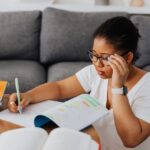Having written essays for years, I have often been asked the secret to a perfect Theory of Knowledge exhibition. From my experience, selecting TOK exhibition objects is one of the most critical aspects. These items constitute the core of your work, guiding the story and connecting your thoughts to TOK themes. But what are the objects for the TOK exhibition, and how can one pick the appropriate ones? Let us now discuss these issues.
What Qualifies as a TOK Exhibition Object?
When we discuss TOK objects for exhibition, we discuss things that might graphically and intellectually depict TOK concepts. You must choose these items deliberately, considering their relation to the Theory of Knowledge themes and capacity for intellectual stimulation. I believe the best objects for TOK exhibition speak to many levels — culturally, historically, and individually. Generally speaking, a suitable object permits a lively debate and closely relates to the exhibition prompt.
You may now find yourself wondering what kinds of items fit these standards:
- Historical objects. Artwork objects of significant cultural or historical relevance that have survived across time.
- Contemporary devices. Consider computers or cell phones connected to conversations about technology, morality, or the progress of knowledge.
- Personal items of value. Things have personal meaning that may help one investigate how unique events influence knowledge.
This object may be anything from a historical relic, like an old coin that starts a conversation about economic systems and their impact on knowledge, to a current item, like a smartphone, that can spark discussions about privacy, data, and the nature of information in our digital era. The secret is to ensure any item you choose is used deliberately and advances a sophisticated knowledge of the TOK issues.
Your grasp of TOK ideas depends significantly on the objects you pick for your TOK exhibition. They help link abstract concepts with concrete instances, enabling the accessibility and relatability of complicated ideas. One may address the ethics of information, privacy, or even the nature of knowing with a device like a smartphone. It’s more about your connection of the item to the TOK themes than about its level of complexity.
How to Choose Objects for TOK Exhibition?
In my view, a TOK exhibition object should be something you can really and insightfully discuss. Your presentation will clearly show this link between you and the thing. When choosing your items, consider several elements that might improve the depth of your conversation. These, as far as I know, comprise:
- Individual significance. The thing should be relevant or significant to your own life or experiences so your conversation will be more sincere and intriguing.
- Relevance in culture. Objects with cultural relevance may start conversations about how customs and societal values impact knowledge.
- Historical setting. Consider how an item’s past could help clarify its relevance in a TOK setting.
Consider the historical and cultural relevance of the item; this will help you layer your argument. An old typewriter, for example, may look charming. Still, given its significance in the history of communication and how information was recorded and shared, it becomes a potent instrument for investigation within the TOK framework. Generally speaking, your show will be stronger if you create more links between the item and other Areas of Knowledge.

TOK Exhibition Objects Examples
If you’re wondering what has worked well in the past, let me offer good objects for TOK exhibition I’ve seen students use successfully.
A typical example is a piece of traditional art that shows how people in that culture think about knowledge and opinion. This item might make people consider how artistic expression is used to share information and cultural values.
Another interesting example is a musical instrument, like a piano or drum. These objects allow us to examine the idea of information in terms of how it affects feelings and conversation. Musical instruments are strong representations of how knowledge is passed down through generations without words.
An old map, especially one wrong, can be attractive to include in a TOK exhibition. Maps are more than just ways to find your way; they show how we see and understand the world. An old, wrong map could spark a conversation about how knowledge changes over time and how our view of the world is always open to modification.
Also, think of the DNA model or a string of DNA as a thing. From what I’ve seen, this is an excellent way to discuss topics like the connection between information and ethics, especially when discussing identity, genetic change, and humans’ power over nature.
A mirror is another unique and interesting object. Although it may seem easy initially, it’s a perfect tool for researching ideas like how we see ourselves, how appearances can be deceiving, and how what we know about ourselves affects what we know about the world.
Like common or shared knowledge, diaries are records of what a person knows and has experienced. With this object, you can have a deep conversation about how personal events help us understand things more deeply and how we build our own stories.
Creative and Unique TOK Exhibition Objects Ideas
Although choosing traditional objects is tempting, creative thinking helps you stand out and create a lasting impression. Below are some original TOK exhibition object ideas to inspire your choice process.
Everyday Objects with Hidden Depths
From a TOK perspective, sometimes, the most everyday items may be rather potent in connecting with the exhibition prompt. For instance, a key is perfect for researching the ideas of access to information — who controls it, and how knowledge itself could be both a gateway and a barrier. In my view, these commonplace objects are significant as they allow one to turn the ordinary into the deep and provide a fresh understanding of old ideas.
Objects from Nature
Nature is an excellent place to get objects to use for TOK exhibition. Natural things like fossils and seashells are perfect for discussing how time passes, how knowledge grows, and how all living things are linked. For example, a fossil isn’t just a piece of history; it’s also a window into the history of knowledge that shows how our ideas about the world have changed over thousands of years.
Technological Artifacts
Technological objects are very successful in TOK exhibitions as they draw attention to the junction of knowledge, ethics, and social influence. For example, you could use an old cassette tape to discuss the preservation of information, changes in media, or the impact of technology on cultural memory. These pieces are flexible for your display, enabling nostalgic and forward-looking debates.
Cultural Symbols
Cultural symbols, like traditional masks or religious iconography, can have great power. IB standards and the TOK exhibition rubric say they work exceptionally well because they show the shared values, beliefs, and ways of knowing in different cultures. A traditional mask could be used to discuss how symbols can teach cultural knowledge or how art can reflect and change social values.
Personal Artifacts with a Story
One of the most interesting TOK exhibition objects is a personal item with an interesting story. You could be talking about something as simple as a childhood toy, or something passed down through the generations. It’s essential to show how the individual story relates to more significant TOK ideas like memory, identity, or how we learn. I know these things strongly affect the narrator and audience, making the exhibition more interesting.
Examples of Bad Objects for a TOK Exhibition
A “bad” TOK exhibition object doesn’t connect with the TOK ideas, is shallow, or doesn’t give us much to discuss. These are some examples of things that don’t quite make the grade.
💡 If you’re struggling to meet deadlines or need more time to prepare for your exams, consider buying a TOK exhibition from our expert IB writers. ✍️
Everyday Items with No Deeper Meaning
Even though things like a spoon or a pencil are common and well-known, they don’t usually have the power to start a deep conversation unless they are used in a specific and creative way. They might seem pointless or shallow if they don’t have a solid link to a TOK theme.
Overused or Cliché Objects
Students often use objects like a globe or a book in TOK exhibitions. While these items can be relevant, they are usually chosen without much thought, leading to generic discussions without considering TOK knowledge issues. Choosing an everyday item is essential, but you should look at it from a new and different angle.
Objects with Limited Scope
Things too particular, like a single leaf or a bit of thread, may not have enough substance for a thorough investigation. Although these items might be helpful if linked to a particular knowledge issue, they usually lack the wide enough breadth to relate to many TOK topics.
Too Personal or Obscure
Although the personal connection is important, selecting a too-personal item, like a family picture, might restrict the conversation to your own experiences without more general significance. Likewise, obscure things requiring much prior information might confound rather than educate your audience.
Looking for tips on writing a strong TOK exhibition commentary? Our latest article provides clear guidelines and examples to help you succeed.

Need Help with Your IB TOK Exhibition?
From research and analysis to structuring and editing, our skilled mentors will be by your side, helping you write an exceptional TOK exhibition that meets the word count and stringent IB criteria.
Lack of Cultural or Historical Context
Items without relevant cultural or historical history may not provide the layers of debate required for a successful TOK exhibition. For instance, a simple white piece of paper can be a blank canvas, but it offers little study of information and comprehension without a creative aspect.
Final Thoughts on TOK Exhibition Objects
The objects you pick should be helpful, interesting, personal, and have value for you. Start choosing early, give your options much thought, and don’t hesitate to take chances. If you do it right, your TOK exhibition can show that you understand how complicated information is.
These tips will help ensure your TOK exhibition works well and stands out. Remember that the best objects for the TOK exhibition will affect you and your audience for a long time. Thank you for your time. If you need help, feel free to get in touch with our EE and TOK writers.
Luke MacQuoid
Luke MacQuoid has extensive experience teaching English as a foreign language in Japan, having worked with students of all ages for over 12 years. Currently, he is teaching at the tertiary level. Luke holds a BA from the University of Sussex and an MA in TESOL from Lancaster University, both located in England. As well to his work as an IB Examiner and Master Tutor, Luke also enjoys sharing his experiences and insights with others through writing articles for various websites, including extendedessaywriters.com blog
- Impact of Artificial Intelligence on Knowledge and Learningby Luke MacQuoid
- Challenges in Translating Knowledge Across Languages in TOKby Luke MacQuoid
- What Is an Interdisciplinary TOK Essay?by Luke MacQuoid
- Impact of Digital Media on Knowledge Perception in TOKby Luke MacQuoid
- Complexities of Bias in Knowledge Productionby Luke MacQuoid
- The Role of Paradigms in Shaping Knowledge in TOKby Luke MacQuoid





